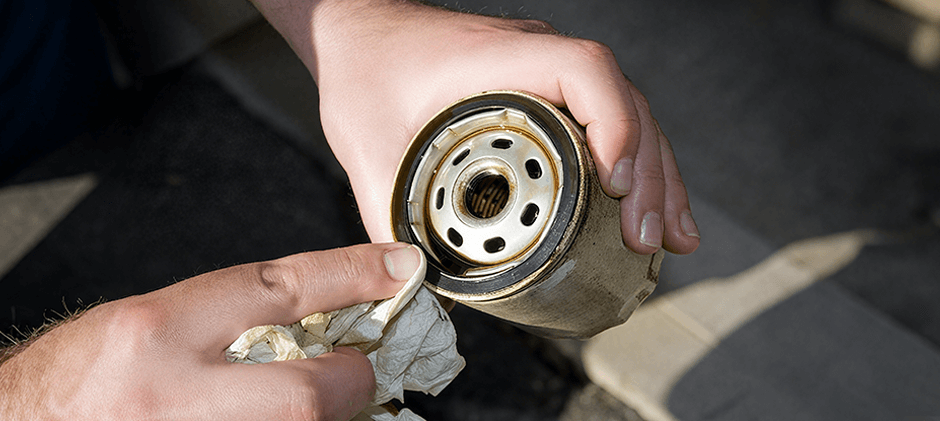What do you consider when buying an oil filter? The market has many options and prices, making it difficult to decide. Usually, the first thing people think about is price, sacrificing filter performance and lifespan for short-term savings. However, cheaper filters are less efficient and need to be replaced frequently. High-quality filters last longer and are the more economical option in the long run. In this paper, we will explore how to evaluate the quality of a hydraulic oil filter.

Terms Related to Oil Filters
When you look at a hydraulic oil filter, manufacturers use several key terms. If you’re not familiar with them, it can be confusing.
Flow Rate: The volume of oil that can pass through the filter in a set time (e.g., gallons per minute). The oil supply not being enough for hydraulic pumps can be caused by low flow. Worsely, it can also lead to component damage, especially in high-load operations such as lifting heavy loads.
Filter Media: Actual material inside the filter that does the work of capturing contaminants. It can be made from basic cellulose (paper), synthetic materials like glass fiber, or a blend. The quality of the filter material is an extremely important factor.
Dirt-Holding Capacity: The amount of contaminants the filter can hold before it fails. In dusty environments like construction sites or quarries, a higher dirt-holding capacity means longer service intervals and better protection.
Capture Efficiency: A filter’s ability to capture particles of a specific size. A good filter must capture the tiny, invisible particles that cause the most wear. This is often expressed as the Beta Ratio.
How to Evaluate Hydraulic Oil Filter Quality?
Most filter manufacturers verify the product’s interception capabilities against different particle sizes through tests. The test method is: first, enter a certain number of particles into the filter, and then measure how many particles are left after passing through the filter. The results are usually expressed in terms of “betaby”.
When selecting a filter, besides the filter itself, its purpose and the fluid used are also important. Like turbines and hydraulic systems, they are extremely demanding in terms of lubricant cleanliness. Correspondingly, higher-level filters are also required. For example, a hydraulic system may require a 4 micron filter with a beta value of 2000, which means that it can remove 99. 95% 4 micron particles.
Equipment such as excavators and loaders works in dusty environments. There is no doubt that fluids are extremely susceptible to external contamination. Hydraulic fluid is not only a lubricant, but also a medium that transmits high power. Therefore, filters used in heavy equipment require extremely high filtration efficiency (high beta) to protect hydraulic components. Devices that are frequently subjected to vibration require higher structural strength. You should always look for filters with high beta values (absolute values) for construction equipment. The hydraulic system may require a filter with a beta value of 1,000 (beta5 = 1000) at 5 microns.
Quality Indicators of Hydraulic Oil Filter Elements
A hydraulic oil filter element can be regarded as a very fast-consuming part and often needs to be replaced. So how do you distinguish between ordinary and high-quality filter elements? It can be judged from these aspects:
Material distinction
Poor filter element with bad material, yellow and uneven color, poor pressure resistance, it will break soon after use. Good filter elements are mostly made of fiberglass. This material is strong and durable, can withstand large pressure, and can work stably for about 500 hours under normal conditions.
Denseness
The filter material of the inferior filter element is loose and loose, and the filtration effect is naturally compromised; while the high-quality filter element is tightly packed and feels solid, making it look more reliable.
Workmanship and weight
The difference can also be seen in the details: the protective layer of the inferior cartridge is very thin, about 0.5 mm, while the quality cartridge is 1.5 mm thick, making it more durable. The weight in the hand is also very different; the cheap filter element is only 1.8 kg, while the high one can reach 3.5 kg, almost twice as much. You can know which one is more reliable as soon as you hold it.
Practical Tests to Verify Filter Elements
Beyond a visual inspection, there are other methods to gauge quality. One simple yet effective method is the “bubble test.” This helps you assess the consistency of the filter media and the quality of the seals. Submerge the filter element in a tank of water or solvent. Seal one end and apply very low-pressure compressed air to the other open end. Observe the bubbles.
- A poor-quality filter will produce large, inconsistent bubbles from various spots. This indicates leaks in the end cap seals or large, uneven pores in the filter media itself.
- A high-quality filter will produce a uniform and very fine stream of tiny bubbles across the entire surface of the media. This shows that the seals are tight and the media’s pores are consistent, forcing air through evenly.
A simple experiment can find the difference in filter element quality. If a filter element can’t even block air, it certainly won’t be able to filter hydraulic fluid to a fineness of a few microns. Finally, always check the product specifications.
Final Thoughts
Stopping contaminants, hydraulic oil filters play a role in hydraulic and lubrication systems. With the above method, you can choose a better hydraulic oil filter within your budget. As a parts supplier, FridayParts is committed to providing OEM-quality products at affordable prices. We understand the needs of heavy equipment, so our large inventory guarantees low prices without sacrificing quality, which fits various popular equipment brands and models.
